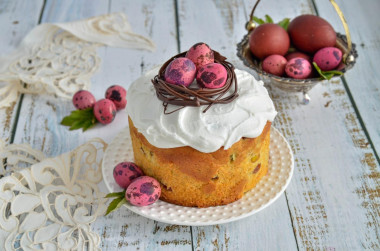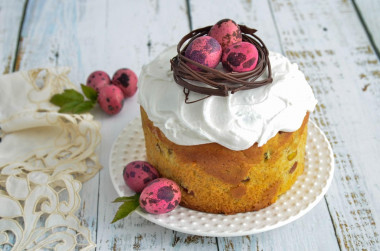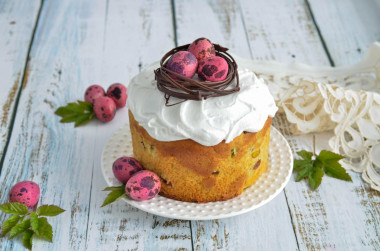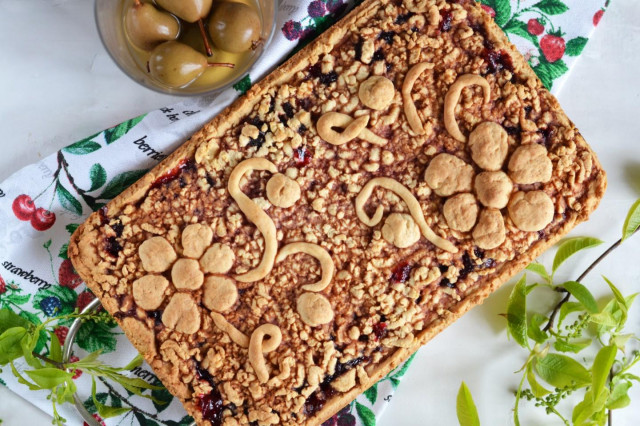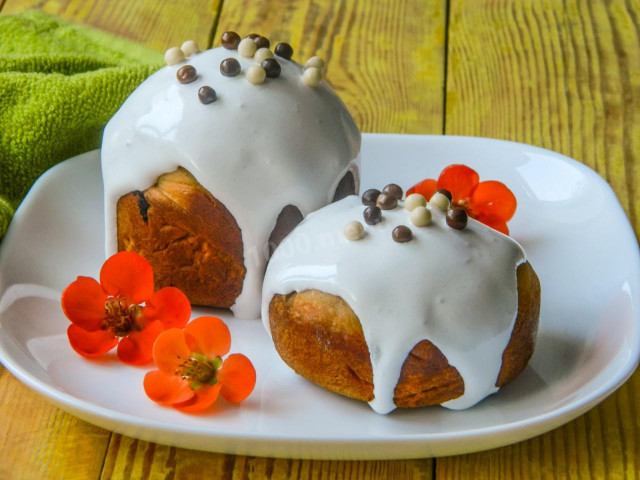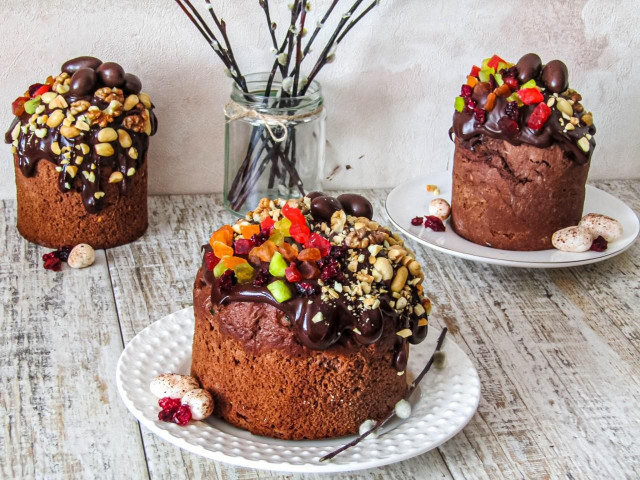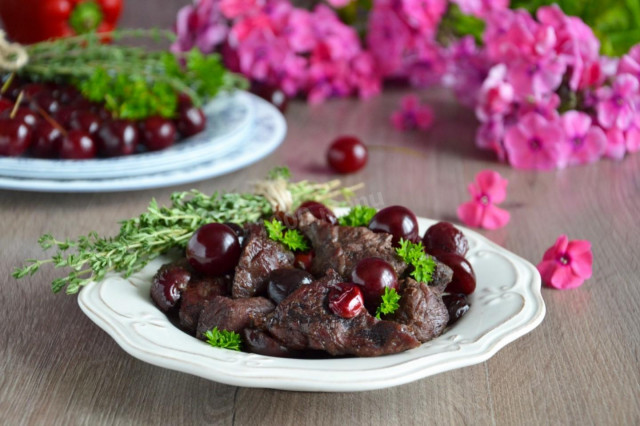Composition / ingredients
Step-by-step cooking
Step 1:
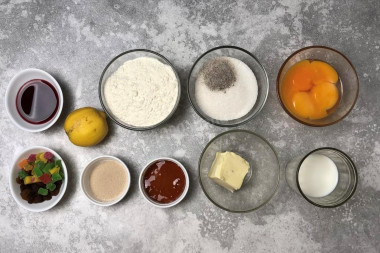
Prepare the products. For this recipe, I would strongly recommend using kitchen scales, accuracy is very important here. Therefore, the yolks are given in grams, not in the number of eggs. All products should be at room temperature, eggs and butter should be removed from the refrigerator in advance. In addition to lemon, you can also take an orange.
Step 2:

Sift the flour into a large bowl. Be sure to do this, sifting saturates the flour with oxygen, which makes the baking airy. Plus removes unnecessary impurities that may be in the flour.
Step 3:
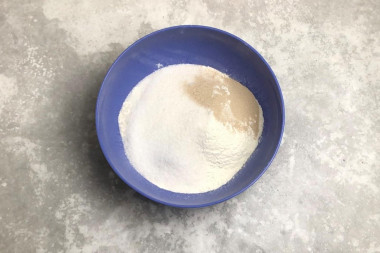
Add all the other dry ingredients to the flour - sugar, vanilla sugar and dry yeast. If you have taken fresh yeast, then do not add them now, they will then go into liquid ingredients.
Step 4:
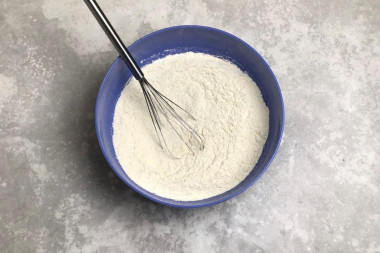
Mix the dry ingredients well with a whisk.
Step 5:

In another bowl, mix the egg yolks and honey. 150 grams is about 8 yolks of eggs of the zero category, but they must be weighed and measured out an even amount. Warm up the milk to a warm state so that the finger dipped into it feels pleasantly warm, and not burned. Add the milk to the yolks, mix well. If you use fresh yeast, then add it at this stage.
Step 6:
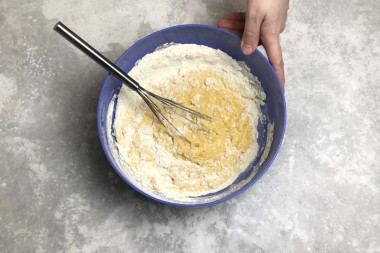
Next, combine both mixtures by pouring the liquid ingredients into the dry ones. Stir the mixture with a whisk. If you have a mixer with dough nozzles, it's better to take it, with a whisk or with your hands, it will also work, but it will be long and hard. I'm not looking for easy ways, so I kneaded with my hands.
Step 7:
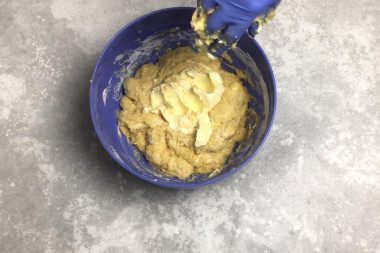
When both mixtures are more or less mixed, start adding portions of soft butter. Mix it until the dough is completely homogeneous (homogeneous). It took me about 10 minutes to do it with my hands.
Step 8:

Remove the zest from the lemon. Pre-rinse the lemon well with soda and a brush to remove the protective wax layer. The peel is the top thin layer of the peel that goes up to the white layer. Remove it with a fine grater. Rub the lemon gently so as not to remove the next white layer, which is bitter. If you also took an orange, then remove the zest from it. Add the zest to the dough. Continue kneading it for another 5 minutes.
Step 9:
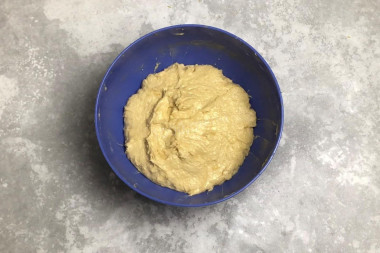
When the dough becomes smooth, assemble it into a ball. It will remain sticky, use a silicone spatula. Cover the bowl with cling film or lid and remove the dough to rise in a warm place. I heated the oven to 50 ° C, then waited a little and put the dough there. If you have warm batteries, then put them next to it. The main thing is that there are no drafts.
Step 10:
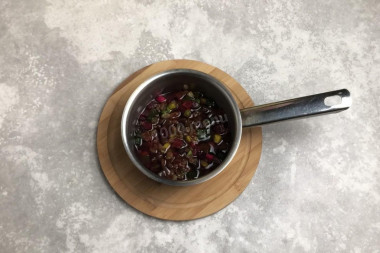
While the dough is rising, prepare the dried fruits. Rinse the raisins and candied fruits thoroughly in a colander, and then pour a small amount of boiling water. Add cognac to the same place. Instead of cognac, you can use rum, whiskey or other strong aromatic alcohol. Leave it all to soak for a few hours.
Step 11:

The dough should grow very much and everything should bubble. It can take from 3 to 6 hours, depending on the temperature and the yeast you use. Mine stood for 4 hours.
Step 12:
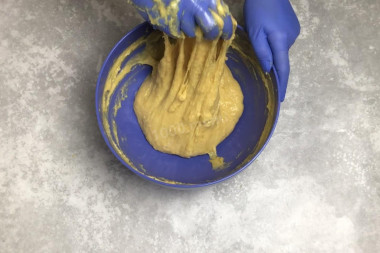
Start kneading again. The dough will fall off a lot, do not be afraid of this. And again I will recommend a mixer. I had to knead with my hands for about 20 minutes, the mixer would have coped in 5-10. It is necessary to ensure that the dough does not tear when stretched, but lasts for some time.
Step 13:
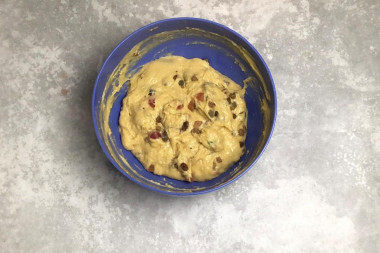
When this is achieved, add the raisins and candied fruits. They must first be thrown on a sieve and allowed to drain the liquid. Mix well.
Step 14:

Take the baking molds. I baked in paper ones, you don't need to do anything with them. Brush others with a thin layer of vegetable oil. Put the dough into the molds, filling them one-third. I got two large molds, but it was possible to decompose into three. And it's even better to take not big ones, but small ones, then about 4 will come out. The dough is quite heavy, and in small cakes it will bake better and faster.
Step 15:
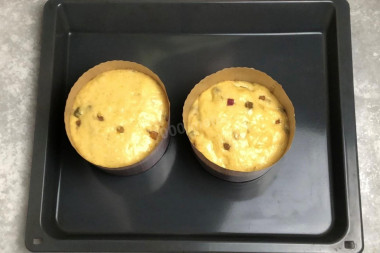
Return the dough again, already in the molds, to the heat. I turned the oven back on at 50 ° C, turned it off, waited a little, and put a baking tray with molds in it. The dough will have to grow again, it will take an hour and a half. Mine was warm, it grew like this in an hour.
Step 16:
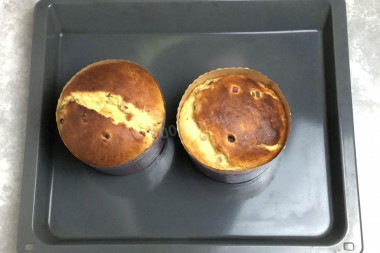
Next, turn on the oven at 180 ° C, top-bottom mode. If your cakes were already in the oven, then you can not take them out, but warm them up with them. Bake cakes for 25-30 minutes. If your cakes are large, like mine, then increase the time to 40-45 minutes. If the top starts to brown too much, cover it with foil circles. Remove the finished cakes and cool them. If desired, cover them with any glaze, it will be convenient to make it from the remaining proteins.
It was a difficult cooking process, due to the fact that I kneaded with my hands, not with a mixer. But the cake turned out very tasty! I almost didn't have enough salt, I think you can add a small pinch to the dry ingredients. Lemon zest gave a wonderful aroma, a large amount of muffin made the cake soft and tender.
--------------------
Be prepared for the fact that flour may need a little more or, conversely, less than indicated in the recipe. You need to focus on how the dough should turn out (dense, soft, liquid, etc.). There is a lot of useful information about why flour, even of the same variety, can have completely different properties,
read this article
.
Keep in mind that everyone's ovens are different. The temperature and cooking time may differ from those specified in the recipe. To make any baked dish turn out successfully, use useful information in the article about ovens here .
Caloric content of the products possible in the composition of the dish
- Whole cow's milk - 68 kcal/100g
- Milk 3.5% fat content - 64 kcal/100g
- Milk 3.2% fat content - 60 kcal/100g
- Milk 1.5% fat content - 47 kcal/100g
- Concentrated milk 7.5% fat content - 140 kcal/100g
- Milk 2.5% fat content - 54 kcal/100g
- Lemon - 16 kcal/100g
- Lemon zest - 47 kcal/100g
- Honey - 400 kcal/100g
- Whole durum wheat flour fortified - 333 kcal/100g
- Whole durum wheat flour, universal - 364 kcal/100g
- Flour krupchatka - 348 kcal/100g
- Flour - 325 kcal/100g
- Granulated sugar - 398 kcal/100g
- Sugar - 398 kcal/100g
- Butter 82% - 734 kcal/100g
- Amateur unsalted butter - 709 kcal/100g
- Unsalted peasant butter - 661 kcal/100g
- Peasant salted butter - 652 kcal/100g
- Melted butter - 869 kcal/100g
- Raisins - 280 kcal/100g
- Kishmish - 279 kcal/100g
- Candied fruits - 216 kcal/100g
- Ordinary cognac "three stars" - 239 kcal/100g
- Cognac - 239 kcal/100g
- Egg yolks - 352 kcal/100g
- Vanilla sugar - 379 kcal/100g
- Dry yeast - 410 kcal/100g



